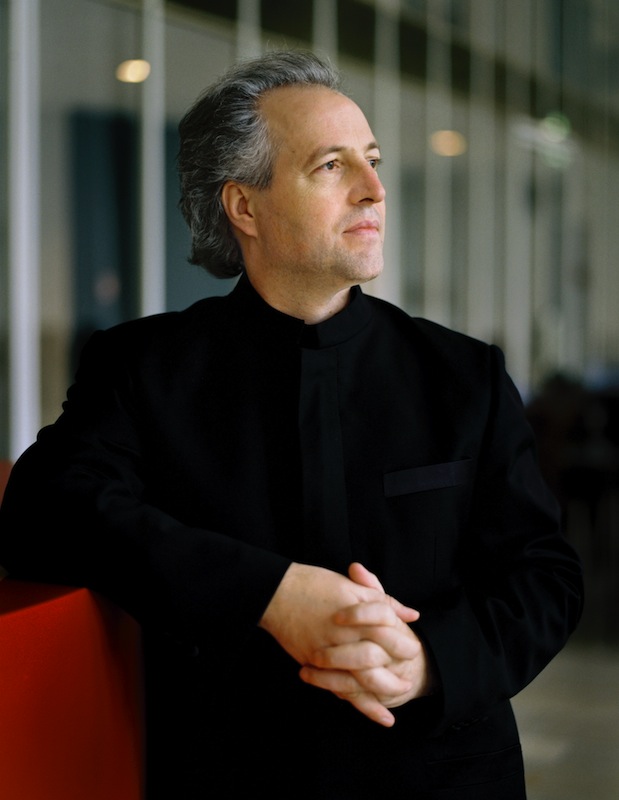Honeck delivers a feast of Romantic music with Philharmonic

Manfred Honeck conducted the New York Philharmonic Thursday night at David Geffen Hall. Photo: Felix Broede
In a sense, at the heart of the act of interpretation is the ability to make a fresh experience of even the most familiar artistic material. In that regard, there are few better than Manfred Honeck—when he conducts, he seems to cherish every note of the score, and communicates his deep understanding of the music to the audience, as he did in his appearance Thursday night with the New York Philharmonic.
The first piece on Thursday’s program was one of his own devising: a Rusalka Fantasy, arranged by Honeck with orchestration by Tomáš Ille. A fantasy in the true musical sense, the piece does not try to reconstruct or represent the narrative of Dvořák’s opera, but rather reorganizes the music into a compelling new progression.
Honeck’s Fantasy opens not in the dark depths of Rusalka’s woodland home but in grand style with the ball music from Act II. A much more cheery confection than the full opera, the Fantasy weaves together music from the Dryads’ dances, the Prince’s search for Rusalka, Ježibaba’s dark incantations, and Vodnik’s lament, just to pick out a few highlights.
Where Honeck sticks to material that mostly focuses on the orchestra, his Fantasy is an enjoyable and well-constructed survey of Dvořák’s musical ideas—the whirling dance of the dryads thrilled in this concert setting. The “Song to the Moon,” surprisingly, was less effective than the rest of the piece, as concertmaster Frank Huang’s violin solo didn’t quite capture the bright glow of the arching melody as a soprano does. The performance he led was crisp, always managing to balance the primary voices perfectly against their support.
The Fantasy was followed by the most intense of the Romantic violin concerti, that by Sibelius. This concerto is a bit of an oddity among its siblings—whereas the other great Romantic concerti (Brahms, Beethoven, Tchaikovsky, Mendelssohn) all shine with heroic nobility, Sibelius’s stands out as a tragic anti-hero, simmering with barely-controlled fury and prone to enormous swings of passion.
Nikolaj Znaider largely captured that stormy spirit, maintaining an intensity in his playing without straying wildly, save in moments of extreme outburst, such as the fiery coda to the first movement. His warm, quiet sadness in the Adagio stood in stark contrast to the cresting emotions of the orchestra. He got off to a rough start in the third movement, and sounded a little tight for much of it thereafter, but still gave it an energetic, rugged reading.
Znaider’s interpretation was commendable, but what really stood out in this performance was the work by Honeck and the Philharmonic. The level of care and detail that they brought to the accompaniment is just about unheard of apart from studio recordings. Honeck approached the concerto with just as much seriousness as the “main” items on the program, which led to orchestral tuttis of biting power—an important element in a piece like this one, that puts so much of the dramatic power in the hands of the orchestra.
They closed with selections from Tchaikovsky’s Sleeping Beauty, a work that can easily drag if not played with purpose. No surprise, Honeck drew powerful, focused playing out of the Philharmonic in a vivid reading that reflected the theatricality of the ballet score.
As with his Rusalka Fantasy, Honeck’s selections weren’t presented in original order, but arranged for best effect in the concert setting. The only number in its “proper” place was the Introduction, in which the full orchestra showed rich color and depth right from the start. Gorgeous, rocking calm characterized the Panorama, and the Act I Waltz was rendered in sweeping curves, with buoyant energy and breezy warmth. The gossamer whispers at the conclusion of the Act I Finale were interrupted by a thunderous sneeze from the balcony; Honeck, a terrific sport, turned around, chuckled, and gave a slight nod towards the perpetrator, to the delight of the audience.
The Pas de quatre of the wedding scene featured a sumptuous, pulsing beat almost like a barcarole, progressing into charm and sparkle as it cleverly portrayed the idiosyncrasies of the various fairies. Honeck’s choice to end the suite with the “Rose Adagio” put one in mind of the closing “Amoroso” of Prokofiev’s Cinderella, weaving a final spell with glittering warmth.
The program will be repeated 8 p.m. Saturday and 7:30 p.m. Tuesday at David Geffen Hall. nyphil.org; 312-294-3000.


